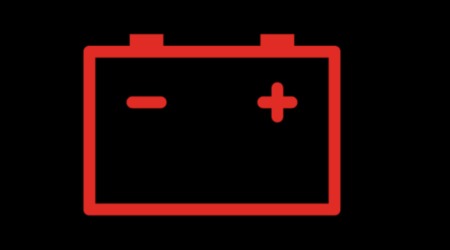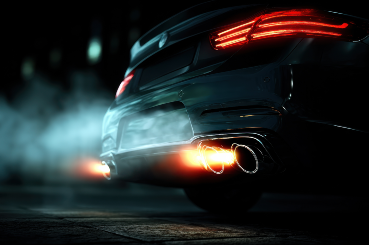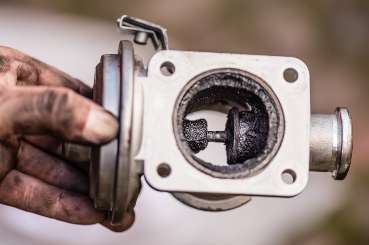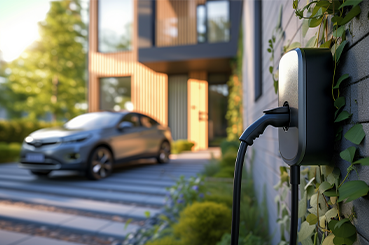When driving, few indicators on your dashboard are as crucial as the battery warning light. Typically appearing as a red battery warning light, this small yet significant symbol alerts you to potential issues within your vehicle’s electrical system. Ignoring this warning could lead to severe consequences, including breakdowns, extensive electrical damage, or even leaving you stranded.
What Does the Battery Warning Light Mean?
The battery warning light indicates a potential issue with your car’s electrical system or battery performance. Specifically, this usually points to problems with your vehicle’s charging capabilities, often linked to a faulty alternator, deteriorating battery performance, or electrical system malfunctions.

What Causes the Battery Warning Light to Come On?
Battery-related problems are among the most common causes of the battery warning light activating.
A failing battery may struggle to hold a charge, triggering the alert. Additionally, alternator issues, such as worn-out components or failing belts, can prevent the battery from charging correctly, causing the warning light to appear.
Electrical faults, including loose connections or corrosion on battery terminals, are also common culprits. These seemingly minor issues can disrupt your car’s electrical supply, resulting in the battery warning light on your dashboard illuminating.
1. Damaged Battery or Cables
Probably the most common cause of the battery warning light is a failure of the battery itself. Over time, batteries can become damaged, the terminals can become corroded, or the cables can become dislodged or damaged.
If this happens then the battery will no longer be able to hold the charge from the alternator and will gradually lose power over time.
You can check the battery for damage or corrosion, but you must be extremely careful and wear eye protection when you do so. We would always recommend that you have your battery checked by a professional technician if you suspect that it may be damaged in any way.
2. Faulty Alternator
Your alternator produces the electrical charge that is stored in your car’s battery. It also provides electricity to the car while it’s running, helping to power things like the headlights, heater, radio and electric windows.
If your alternator fails, your car’s electrical systems are all draining power directly from the battery, hence why your car will lose power and ultimately come to a stop. There is simply not enough power stored in your car’s battery to power all the necessary electrical systems and keep your car running at the same time.
3. Broken Alternator Belt
This is perhaps the most serious problem, as the belt not only drives the alternator, but the engine coolant pump and power steering system.
If your engine warning light comes on and you notice that either your engine temperature is increasing, or your car becomes much harder to steer, you may have an issue with the alternator belt.
If this is the case, we would recommend that you stop your car as soon as it’s safe to do so and call your local garage or breakdown service. If you continue to drive with a broken alternator belt you could cause serious damage to your car’s engine.

What to Do When Your Battery Warning Light Comes On
1. Safely pull over if possible.
2. Turn off unnecessary electrical systems (radio, A/C, etc.) to conserve battery power.
3. Check for visible issues under the bonnet, such as loose connections or corrosion.
4. Avoid driving long distances with the light on, as this could damage your vehicle further.
5. Contact a professional: Stoneacre are available with expert technicians
What Does It Mean If the Light Only Flashes Occasionally?
An occasionally flashing battery warning light on dash typically indicates intermittent issues in your car’s electrical or charging system. While not immediately critical, it should never be ignored. Persistent flashing can signal evolving problems that need expert diagnosis and attention.
Preventive Maintenance Tips for Your Car Battery
To avoid encountering the battery warning light on your dashboard, regular preventative maintenance is vital:
- Regularly check and clean battery terminals.
- Test your car battery every 6 to 12 months, especially during winter.
- Monitor your alternator’s condition and replace it if it shows wear.
- Avoid leaving electronics running when your engine is switched off.
- Replace your battery approximately every 3 to 5 years or as recommended by your car’s manual.
Take Action Before It’s Too Late
Addressing the battery/alternator warning light promptly can prevent minor issues from escalating into major problems. At Stoneacre, we offer trusted expertise, ensuring your vehicle remains in optimal condition.
Find out more when it comes to the other warning lights on your dashboard with our Dashboard Warning Lights Explained blog!




















